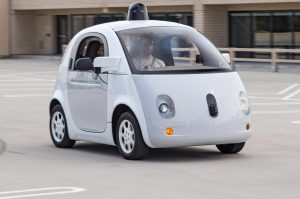 Google’s (NASDAQ:GOOG) self-driving vehicles have been given the green light to honk at others on the road. Google assures us that the cars will be unfailingly well behaved. Google claims the car will “be polite, considerate and only honk when it makes driving safer for everyone.” In a statement, the company wrote, “Our goal is to teach our cars to honk like a patient, seasoned driver.”
Google’s (NASDAQ:GOOG) self-driving vehicles have been given the green light to honk at others on the road. Google assures us that the cars will be unfailingly well behaved. Google claims the car will “be polite, considerate and only honk when it makes driving safer for everyone.” In a statement, the company wrote, “Our goal is to teach our cars to honk like a patient, seasoned driver.”
The company has been testing this application inside the car for some time now, teaching the vehicles the difference between false positives and tricky situations. At first, the company only played the horn inside the vehicle so that the car wouldn’t confuse others on the road with a wayward beep. A human rode in the car and took notes on when the horn was used determine whether the beep was appropriate. The results were fed into Google’s honking algorithms to improve their effectiveness.
Google has taught the vehicles to use different types of honking for specific situations. For non-threatening situations, like a car slowly backing up towards the vehicle, the horn will let out two short beeps. However, for dangerous situations, like a pedestrian wandering into its path, it will let out a loud sustained honk.
Google’s self-driving cars use a combination of radar, lasers and cameras to give the car a 360-degree ‘view’ of its surroundings. The sensors are linked to computer software that can distinguish between people, cars, road signs and markings and traffic lights. The ability to self-drive currently depends on specifically designed Google road maps tested on the company’s current fleet of vehicles, but the company believes that the cars will be able to navigate using Google’s extended maps service and GPS technology in the near future.
Google is currently testing its fleet of self-driving cars in the western part of the US. That fleet currently includes twenty-four Lexus RX450h SUVs and 34 pod-shaped prototype vehicles. As of May 31st, the cars have logged 1.64 million miles in autonomous mode and 1.120 in manual mode. The prototypes are currently restricted to speeds of 25mph.
